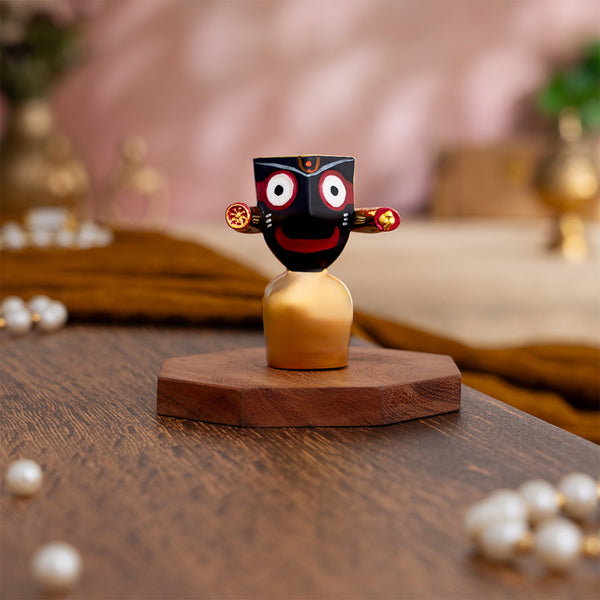India is a land of festivity. With religious celebrations surrounding us at every turn, the Rath Yatra or Chariot Festival is one of our most vibrant and grand religious celebrations. Held annually in the coastal town of Puri, Odisha.
This festival hosts millions of devotees from across our country and the world. A festival that celebrates the journey of Lord Jagannath, a manifestation of Lord Krishna, with his brother Lord Balabhandra, and Goddess Subhadra, from their temple to the Gundicha Temple, their aunt’s home.
It is said that the procession involves three massive chariots that are beautifully and intricately decorated and pulled through the streets by the throngs of devotees who flock together to witness this action.
The event’s significance is believed to lie in the thought that participating in the pulling of the chariot and seeing the deities can lead to spiritual purification and blessings.
Considered to be a festival that symbolizes unity, as people from all walks of life come together, united in devotion and joy. The Rath Yatra reflects the rich cultural heritage and deep spiritual traditions of India.
Lord Jagannath, Subhadra, Balabhadra Murti Set - Gold Plated (4 Inch)
When is Jagannath Rath Yatra Celebrated in 2025?
In 2025, the grand celebration of Jagannath Rath Yatra will take place on Friday, 27th June. Devotees from across the globe will gather in Puri to witness this divine procession and be part of the sacred festivities.
Honoring the Sacred Journey of Lord Jagannath
The Rath Yatra, also known as the Chariot Festival, is a beloved tradition that honors the sacred journey of Lord Jagannath.
He embarks on this journey with his siblings, Lord Balabhadra and Devi Subhadra, traveling from the revered Jagannath Temple to the Gundicha Temple in Puri, Odisha.
Every year, the Rath Yatra holds deep significance in Hindu mythology. It symbolizes the Gods’ journey to their aunt’s home.
The grand procession features colossal chariots, intricately decorated and pulled by devoted worshippers, weaving tales of devotion and spirituality.
The Rath Yatra is more than just a religious event in our country. A cultural spectacle that has us seeing millions of eager devotees, waiting to glimpse at the procession. This event is renowned for its celebration and grandeur.
For believers, pulling the chariot is not just a task; it’s a way to seek blessings and achieve spiritual purity. This festival reflects India’s deep spiritual heritage and the unwavering devotion of its people.
In essence, the Rath Yatra is a sacred pilgrimage, symbolizing faith, unity, and reverence for the divine.
Why Rath Yatra is Celebrated : A Symbolic Representation
The Rath Yatra, or Chariot Festival, Lord Jagannath's chariot journey from the Jagannath Temple to the Gundicha Temple is a testament to his desire to reach out to devotees from all walks of life.

With no barriers of social status and background, the Rath Yatra is an embodiment of the notion that the notion of God is the same for every person, irrespective of their station in life.
That said, it doesn’t mean that the festival's symbolism extends beyond religious boundaries. It is meant to be resonating with people from diverse cultural backgrounds.
It serves as a powerful reminder of the values of love, compassion, and inclusivity, fostering unity and solidarity among communities.
As devotees take to the streets to participate in the chariot pulling, you can see the air reverberating with chants and hymns, creating an atmosphere of spiritual fervor and devotion.
This annual event brings together so many pilgrims and tourists, all drawn by the universal message of love and accessibility embodied by Lord Jagannath's sacred journey.
The festival dates back to at least the 12th century CE, when the Jagannath temple was built by King Anantavarman Chodaganga Deva. However, some sources suggest that the festival was already in practice since ancient times.
The festival is also known as the Festival of Chariots, as the deities are carried on three massive wooden chariots that are pulled by devotees with ropes.
It begins on the second day of the bright fortnight of the month of Ashadha (June-July) and lasts for nine days.
The Grand Chariots : Wonders of Ancient Engineering

At the heart of the Rath Yatra, or Chariot Festival, lie the magnificent chariots that carry the revered deities on their annual journey from the Jagannath Temple to the Gundicha Temple.
Imagine the grandeur of the chariots and multiply it by a dozen. These chariots are not just impressive; they're marvels of ancient engineering and showcase Odisha's rich cultural heritage.
Each chariot is a marvel of craftsmanship, towering high with intricate carvings and vibrant decorations.
The chariot of Lord Jagannath, known as Nandighosa, stands the tallest, reaching heights of nearly 45 feet. It is adorned in vibrant yellow and red hues, symbolizing the vibrant spirit of the festival.
Lord Balabhadra's chariot, Taladhwaja, stands next in stature, painted in hues of deep blue and green. Devi Subhadra's chariot, Devadalana, completes the trio, painted in bright shades of red and black.
The dimensions of these chariots hold deep symbolic significance, representing facets of divine power and cosmic order.
Each element of the chariots, from their towering spires to their sturdy wheels, represents facets of divine power and cosmic order.
As devotees gather to witness the spectacle of the Rath Yatra, they marvel at the sheer scale and intricacy of these ancient engineering wonders.
The sight of these colossal chariots rolling through the streets evokes a sense of awe and reverence, reminding all of the enduring legacy of craftsmanship and devotion that defines the Rath Yatra.
The Jagannath Puri Temple stands as a magnificent monument in Odisha, India, often referred to as the "White Pagoda" and a vital stop on the Char Dham pilgrimage circuit.
Its architectural beauty showcases the unique Kalinga style, boasting intricate carvings and ornate sculptures.
Surrounded by towering walls punctuated by four gates facing each cardinal direction, the temple complex houses four main structures: the sanctum, assembly hall, festival hall, and offering hall.
Legend has it that the temple holds a special significance as the "Yamanika Tirtha," where the power of Yama, the god of death, is believed to be nullified due to the divine presence of Lord Jagannath.
This sacred site, with its curvilinear towers and rich history, remains a cherished symbol of Hindu belief and tradition, drawing pilgrims and visitors from far and wide.
Celebrating Unity Through Devotion & Faith

As Hindus, we have certain experiences that we hold close to our hearts. For many, the Rath Yatra is a deeply personal experience, which is considered as a time to reaffirm their devotion and express their gratitude to the divine.
It is a chance to connect with fellow devotees who share a singular belief, where you can forge bonds of friendship and community that last long after the festival has ended.
You can see the festival’s inclusive spirit evidently in the crowd’s excitement when they gather to pull the chariots, each person contributing their strength and enthusiasm to the collective effort.
It is such a beautiful sight to behold, a testament to the power of unity in the face of adversity.
The Rath Yatra is a celebration of the spirit of humans, a reminder that no matter our differences, we are united by our shared humanity.
It is a time to come together, celebrate our faith, and shared values, and reaffirm our commitment to one another.
As the chariots roll through the streets, you can feel the excitement in the air. People chat and laugh, caught up in the joy of the moment.
It's a chance for us to come together and enjoy each other's company, sharing in something special that's bigger than any one of us.
Lord Jagannath Murti - Gold Plated (2.75 Inch) Lord Jagannath Puri 3D Wall Frame - Gold Plated Finish

Conclusion
In our country, the Rath Yatra is not just about religion, it is absolutely about the spirit- be it the spirit of devotion, culture, and tradition that has been alive in our country for generations and will continue to do so for generations to come.
A union that sees devotees coming around all the time, we all come together to celebrate our shared heritage and beliefs.
As we watch the chariots roll by, you are reminded of the timeless values that unite us all – love, compassion, and faith. It's a chance for us to connect with something bigger than ourselves, to feel a part of something ancient and sacred.
The Rath Yatra is an experience that shows the richness of Indian culture and spirituality. It's a reminder that, no matter where we come from, we're all connected by something greater than ourselves.







